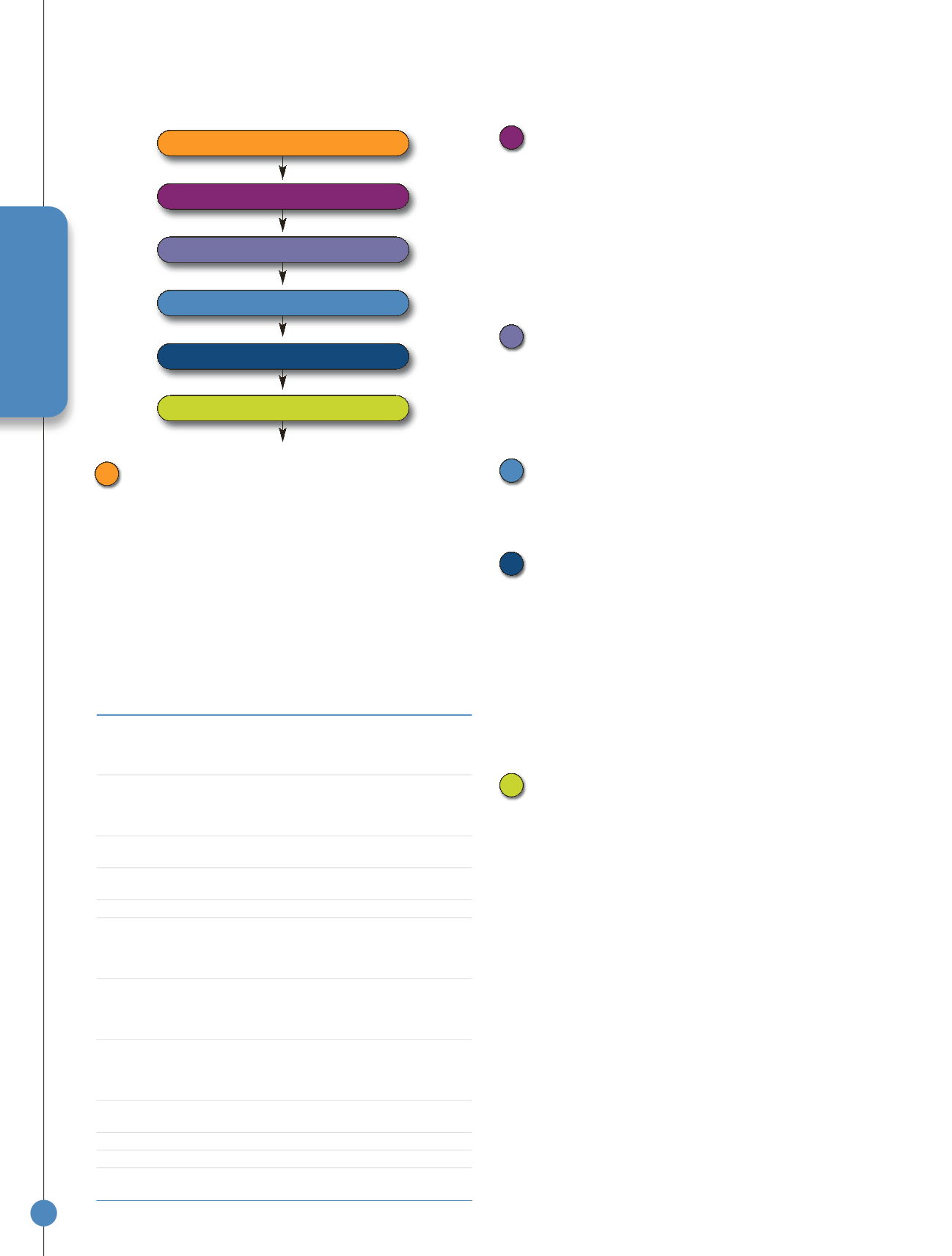

14
Introduction
SPE Procedure – Six Steps for Clean Extract
1. Sample Pre-treatment
2. Column Conditioning
3. Column Pre-equilibration
4. Sample Application
6. Elute Compounds of Interest
5. Wash Away Interferences
Sample Matrix Sample Pre-Treatment
Serum, Plasma Dilute with an equal volume of water or suitable buffer prior
to applying the sample to the SPE column. Buffer choice and
pH considerations are dependent upon the compound of
interest in the sample.
Whole Blood
Blood is similar to serum and plasma, apart from the
presence of whole red blood cells. Dilute with an equal
volume of water or buffer to ensure that compounds of
interest are free in solution.
Urine
Dilute with an equal volume of water or suitable buffer prior
to applying the sample to the SPE column.
Fats, Oils
Dilute samples with non-polar organic solvents such as
hexane due to the non-polar nature of the matrix.
Cereals
Homogenize sample with a non-polar solvent.
Ointments
Ointments are typically either water-based or oil-based. For
and Creams
water-based products, dissolve in a polar solvent such as
methanol. For oil-based products, dissolve in a non-polar
solvent such as hexane.
Water
Pre-treatment is dependent upon the particulate content of
the sample. Some samples can be applied directly to the
SPE product. For samples heavily laden with particulates,
filtration/centrifugation may be necessary.
Soil and Sludge Analytes can be difficult to adsorb onto the sorbent material.
Samples are typically extracted using a non-polar solvent
such as hexane, then using a polar sorbent material for the
SPE process.
Fruits and
Homogenize sample with a polar solvent such as methanol
Vegetables
and subsequently dilute with water if required.
Crude Oil Products Dilute sample with a non-polar solvent such as hexane.
Dairy Produce Typically diluted/homogenized with water or suitable buffer.
Meats and
Dilute sample with water.
Soft Drinks
2
Column Conditioning
Prepare the sorbent for effective interaction(s) with the
compounds of interest.
•
Use an appropriate solvent to condition the column and
activate the ligands on the chromatographic surface
•
Prevent the sorbent from drying during the conditioning
step (dry sorbent can affect the ability of the analytes to
interact); allow about 1mm of last conditioning solvent to
remain above the top tube frit
3
Column Pre-equilibration
•
To re-equilibriate the column, use the same solvent that is
used for the sample pre-treatment step (do not let the
sorbent dry during the conditioning step)
•
Allow about 1mm of last conditioning solvent to remain
above the top tube frit
4
Sample Application
•
Analytes are retained on the sorbent. Apply the sample at
an appropriate flow rate (1mL/minute is a typical flow rate;
too high a flow rate can lead to inconsistent extractions)
5
Wash Away Interferences
Remove impurities bound less strongly than the compounds
of interest.
•
Select a wash solvent that is strong enough to remove the
interferences, but weak enough to leave the compounds of
interest behind
•
Selectively rinse away the less strongly bonded interferences
•
Wash solvent selected according to phase mechanism and
analyte properties (a typical wash solution may contain
less organic or inorganic salt than the final eluent)
6
Elute Compounds of Interest
Selectively recover the analyte(s) by disrupting the
analyte-sorbent interaction.
•
Selectively elute the analytes of interest using
different solvents
•
A smaller elution volume leads to a more
concentrated extract
•
Select an elution solvent that leaves the strongly retained
impurities behind
•
Select elution solvent according to phase mechanism and
analyte properties
•
For best results, elute compounds of interest using two
small aliquots (rather than one large aliquot)
1
Sample Pre-treatment
It is important to optimize the sample for effective analyte
retention. Consider the following when pre-treating a
sample prior to application to the SPE product:
•
Adjust sample/matrix composition for proper
dilution/ionic strength
•
Ensure that sample is at proper pH for optimum retention
•
Confirm that analytes are free in solution
•
Remove any unwanted particulates via filtration or
centrifugation

















